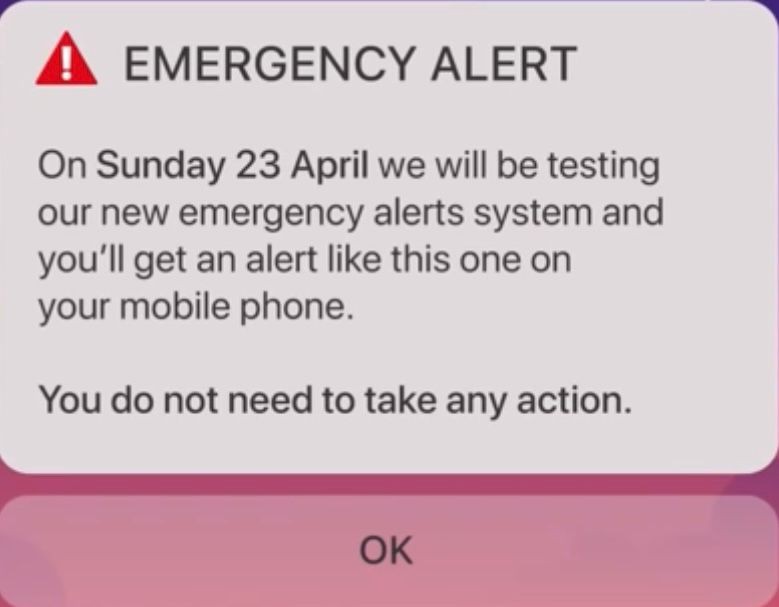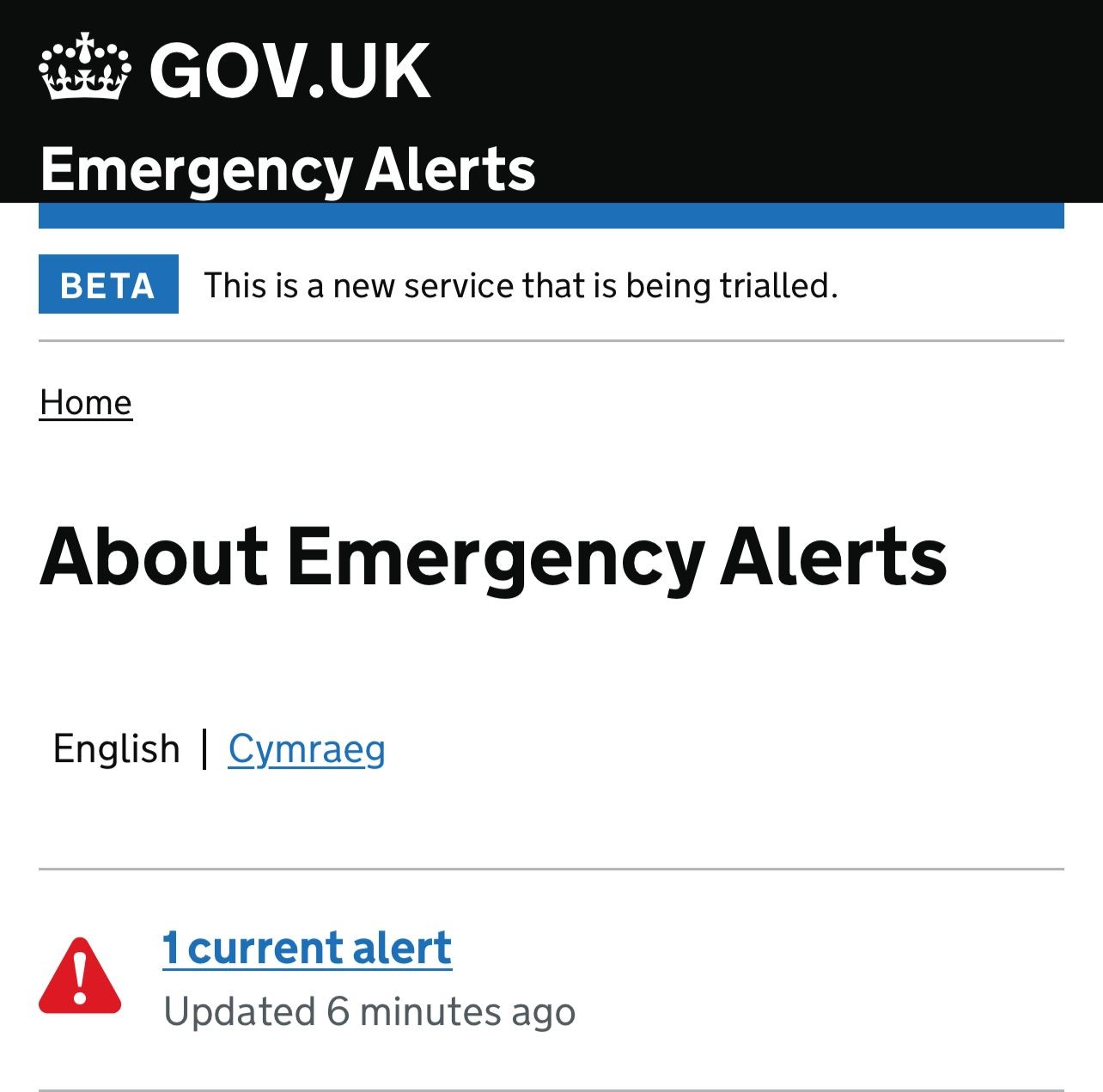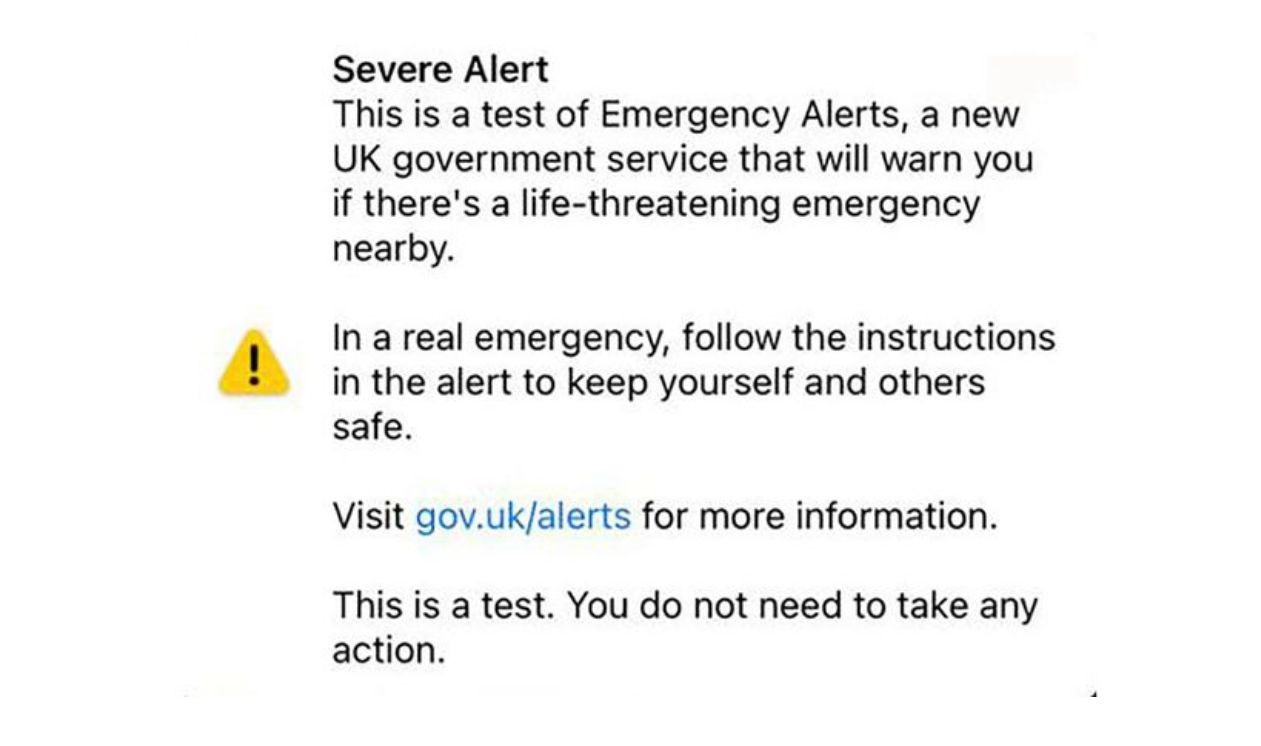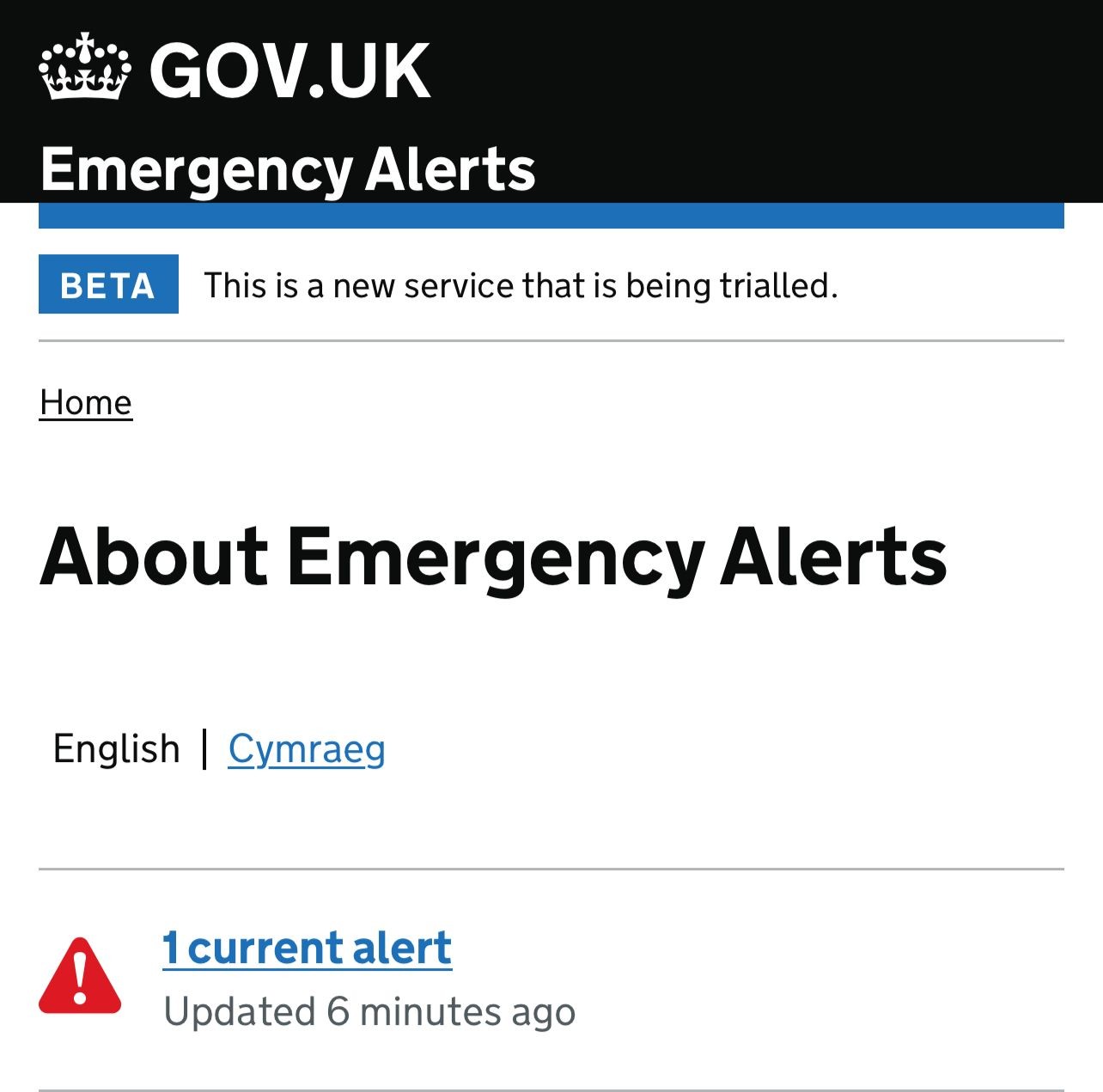The UK government recently launched an "Emergency Alerts" service to warn citizens in life-threatening emergencies. The service sends alerts to mobile phones and tablets, including advice on how to stay safe during emergencies.

The government does not need to know the phone number or location of users to send alerts. Possible situations where alerts might be sent include severe flooding, fires, and harsh weather conditions.

Emergency services, government departments, agencies, and public bodies dealing with emergencies collaborate in sending emergency alerts. Upon receiving an emergency alert, mobile phones or tablets may emit an alarm-like sound and vibrate for approximately 10 seconds.

The alert includes a phone number or a link to the GOV.UK website for more information. Alerts are based on the user's current location, not their residence or workplace. Location services do not need to be enabled to receive alerts.
Upon receiving an emergency alert, users should stop what they are doing and follow the instructions in the alert. If a user is driving a vehicle when receiving the alert, they should not read or respond to the alert while driving or riding. The user should find a safe and legal place to stop before reading the message. If there is no safe and legal place to stop and no other person in the vehicle can read the alert, the user can listen to live news on the radio for more information about the emergency situation. Note that handheld mobile device use while driving or riding is against the law.

If emergency alerts are not received due to device incompatibility, the user will still be informed of emergencies, as emergency services have other ways of warning when there is a threat to life. Emergency alerts will not replace local news, radio, television, or social media.
For people with hearing or vision impairments, the audio and vibration signals used in emergency alerts will inform them of receiving an emergency alert. Emergency alerts will be sent in English, and in Wales, they may also be sent in Welsh.
The emergency alerts are broadcast via mobile phone towers and work on 4G and 5G mobile networks.
This differs from how the government sent lockdown orders during the pandemic when SMS messages were sent directly to phone numbers.
This means that whoever sends an alert does not need your number, so you don't need to reply to it, nor will you receive a voicemail if you miss it. No location or other data will be collected either.
Anyone within the range of a tower will receive an alert, and they can be adjusted based on geography - for example, Manchester residents would not need an alert about life-threatening flooding in Cornwall.
Many people received the alert at 2:59 pm on Sunday - a minute earlier than planned - after it was sent to all 4G and 5G devices across the UK. The alert lasted about 10 seconds.
People were told that they did not have to take any action, and they could swipe the message away.
However, some people reported receiving the message more than 10 minutes after the planned time, while others claimed they didn't receive anything.
再一次问好